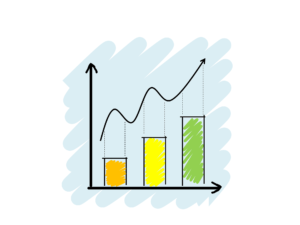
Written by: Kimberly Proffitt
Early summer is the season for fundraising reports and surveys. It’s almost like Christmas when some of the national reports come out, full of data about giving in the past year and predictions for the current year. (Well, maybe not for everyone, but definitely for this data geek.) In June our team reviewed three reports, and all of them keep us optimistic about fundraising in 2021:
- Giving USA 2021, one the largest and longest-running studies in the US of giving from individuals (including bequests), corporations, and foundations
- Burk Donor Survey 2021 (pre-release) (BDS) – a survey asking more than 20,000 donors how they gave in the past year and how they expect to give in the coming year
- Fundraising Effectiveness Project Q1 2021 (FEP Q1/21) – a quarterly report providing statistics on donors, dollars, and retention across more than 241 million donation transactions
Why are we optimistic? Consider these select toplines:
- Overall giving grew in 2020 by 3.8% (Giving USA) – donors stepped up in a time of uncertainty
- Giving in 2020 was a record 2.3% of the US gross domestic product (Giving USA) – especially significant given we were in a recession (which normally leads to a fall in giving)
- 56% of donors gave more in 2020 than they did in 2019 (BDS) – the highest percentage reported since 2009 and a 19 percentage-point jump over 2019
- 79% of donors who gave in 2020 plan to give the same or more in 2021 (BDS) – giving in 2020 wasn’t just a “one-time” thing for many donors
- The number of donors grew by 10% in Q1 2021 compared with Q1 2020 (FEP Q1/21)– the highest growth ever seen in the data in a normally lackluster quarter
- Total dollars given are up 6% in Q1 2021 compared with Q1 2020 (FEP Q1/2021) – driven by those giving less than $500
Where should you focus?
Our optimism is tempered by one thing all these reports had in common: the recommendation (dare we say imperative?) to focus on donor retention. The generous outpouring of giving in 2020, from both established and new donors, was a big deal given all the uncertainty of the year. Yet with the overall donor retention rate in the US at 43.6% and the new donor retention rate at 19.3%, there is a lot of turnover among our donors. This, in turn, is not good for long-term organizational sustainability and growth. Now that things are more stable, can we sustain the growth of 2020? We know economic recovery has not impacted everyone (or all nonprofits) equally, with some doing very well and others struggling. The economy has a large influence on giving, and this will continue to be the case throughout 2021.
What’s happening in 2021 so far?
One piece of good news already in 2021: the FEP report for Q1 2021 shows a slight overall increase in retention (compared to Q1 2020). Leading the charge on this increase are donors who were new in 2020 (up 13.6%!) – a traditionally difficult segment to retain! Progress? Yes – and let’s keep it up! We are huge proponents of retention work and have added to our consulting services over the past few years to focus on just that. Ask about what we have been doing!
Watch for upcoming blogs with more detail on each of the reports. You can also access the reports using the following links:
Burk Donor Survey 2021 (releases in July 2021, fee for report)
Fundraising Effectiveness Project Q1 2021 Report (provide email for a free copy)
Giving USA 2021 (infographic free, fee for full report)
———————
Kimberly Proffitt, Research, Analysis, and Donor Engagement Consultant at Fladeboe Advancement, has worked in the nonprofit sector her entire career, focusing on fundraising and philanthropy for the past 22 years. She takes a special interest in helping organizations understand the stories data tell, strategizing on developing long-term relationships with donors, and reframing fundraising from “asking for money” to engaging with the passions and values of donors.
